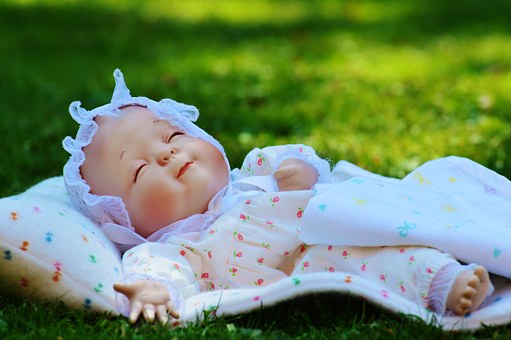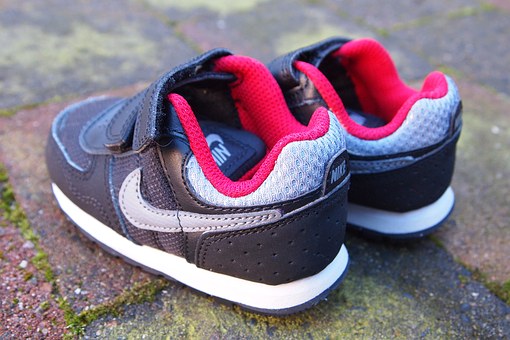Do Childhood Vaccinations Cause Autism?

Do Childhood Vaccinations Cause Autism?
Do Childhood Vaccinations Cause Autism?Do Childhood Vaccinations Cause Autism?
Research into the causes, the diagnosis, and the treatment of autism spectrum disorders (ASD) has greatly advanced. With new well-researched standardized diagnostic tools, ASD can be diagnosed at an early age. With early diagnosis, the treatments found to be beneficial in recent years can be used to help the child with ASD develop to his or her greatest potential.

The institute of Medicine (IOM) conducted a thorough review on the issue of a link between thimerosal (a mercury-based preservative that is no longer used in vaccinations) and autism(National Acadamy of Science). The final report from IOM, Immunization Safety Review: Vaccines and Autism, released in May 2004, stated that the committee did not find a link(Medicine).
Until 1999, vaccines given to infants to protect them against diphtheria, tetanus, pertussis, Haemophilus influenzas type b (Hib), and Hepatitis B contained thimerosal as a preservative. Today, with the exception of some flu vaccines, none of the vaccines used in the U.S. to protect preschool aged children against 12 infectious diseases contains thimerosal as a preservative. The mumps, measles, rubella (MMR) never did contain thimerosal.(National Acadamy of Science). Varicella (chickenpox), inactivated polio (IPV), and pneumococcal conjugate have also never contained thimerosal(National Acadamy of Science) A U.S. study looking at environmental factors including mercury, lead and other heavy metals is ongoing; however, here are some interesting data that I have found.
According to a study from the University of Calgary, Faculty of Medicine, Dept. of Physiology and Biophysics, thimerosal (an ethyl mercury compound used in vaccines(National Autism Association) has been present since the 1930's as a preservative in some vaccines and pharmaceutical products to prevent bacterial and fungal contamination. Mercury is hazardous to humans. The use of a toxic poison as a preservative is undesirable, unnecessary and should be eliminated.
For decades, ethyl mercury was used extensively in medical products ranging from vaccines to topical ointments as preservatives and an anti-bacteriological agent. Manufacturers of vaccines and thimerosal have never conducted adequate testing on the safety of thimerosal(National Autism Association). The FDA has never required manufacturers to conduct adequate safety testing on thimerosal and ethyl mercury compounds. Current evidence suggests thimerosal is neither "safe nor effective" when used as a preservative in vaccines(National Autism Association).
There are over 1500 studies and papers documenting the hypoallergenicity and toxicity of thimerosal (ethyl mercury) have existed for decades(National Autism Association)
At the same time that the incidence of autism was growing, the number of childhood vaccines containing thimerosal was growing, increasing the amount of ethyl mercury to which infants were exposed threefold(National Autism Association).
The University of Calgary also stated in the same report that a growing number of scientists and researchers believe that a relationship between the increase in neurodevelopmental disorders of autism, attention deficit hyperactive disorder (ADHD), and speech or language delay, and the increased use of thimerosal in vaccines is plausible and deserves more scrutiny. In 2001 the Institute of Medicine determined that that such a relationship is biologically plausible, but that not enough evidence exists to support or rejects the hypothesis(Dr. Lorscheider).
Scientists have only recently been able to study the brain systematically. With the emergence of new brain imaging tools, computerized tomography (CT), positron emission tomography (PET), single photon emission computed tomography (SPECT), and magnetic resonance imaging (MRI), study of the structure and the functioning of the brain can be done. With the aid of modern technology and the new availability of both normal and autism tissue samples to do postmortem studies, researchers will be able to learn much more through comparative studies.
Postmortem and MRI studies have shown that many major brain structures are implicated in autism. This includes the cerebellum; cerebral cortex, limbic systems, corpus callosum, basil ganglia, and brain stem.(National Institute of Mental Health). (A diagram of the major brain structures implicated in autism is submitted at the end of this essay). Still other research is focusing on the role of neurotransmitters such as serotonin, dopamine, and epinephrine.
Research into the causes of autism spectrum disorders (ASD) is being fueled by other recent developments. Evidence points to genetic factors playing a prominent role in the causes for ASD (National Institute of Mental Health). Twin and family studies have suggested an underlying genetic vulnerability to ASD. To further research in this field, the Autism Genetic Research Exchange, a project initiated by the Cure Autism Now Foundation, is recruiting genetic samples from several hundred families(National Institute of Mental Health) Each family with more than one member diagnosed with ASD is given a 2-hour, in home screening. With a large number of DNA samples, it is hoped that the most important genes will be found. This will enable scientists to learn what the culprit genes do, and how they go wrong.
There are some studies being done with regards to autism and genetics, but the most recent study has the most specific findings available to date. In January 2008, the results of this study were released announcing that a genetic variation was found in the 16th chromosome(Hincha-Ownby). This variation was not found in either of the parent's DNA, leading researchers to now support, more than ever, the idea that a genetic anomaly may be the cause of some cases of autism.
I am prone to believe that the cause of autism is due to genetics and environment. There are many gene variants that have been linked to autism, but how do these subtle changes alter the brain, and ultimately behavior? Using a blend of brain imaging and genetic detective work, scientists at UCLA's David Geffen School of Medicine, and Semel Institute for Neuroscience and Human Behavior are the first to illustrate how a gene variant ties to autism rewires the brain(Schmidt). Published in the Nov. 3, online edition of the journal Science Translation Medicine, their discovery pinpoints the crucial missing mechanism that links altered genes to modified brain function and disrupted learning.
"This is a key piece of the puzzle we've been searching for," said co-principal investigator Dr. Daniel Geschwind, a professor of neurology and psychiatry who holds UCLA's Gordon and Virginia MacDonald Distinguished Chair in Human Genetics(Schmidt). "Now we can begin to unravel the mystery of how genes rearrange the brain's circuitry, not only in autism but in many related neurological disorders."(Schmidt)
The UCLA team scrutinized the difference in brain connectivity and function that result from two forms of the CNTNAP2 gene, one of which boosts the risk of autism(Schmidt) Ealier studies by Geschwind and others demonstrated that the gene is most active during brain development in the frontal lobe. This region is highly involved in learning, which is often disrupted in autistic children. Suspecting that CNTNAP2 might influence brain activity, the researchers used functional magnetic resonance imaging (fMRI) to scan the brains of 32 children as they performed learning related tasks. Half of the children had autism, and half did not. The team's goal was to measure the strength of various communication pathways in different regions of the brain as they connected with each other.
The fMRI images excited the scientists, and confirmed their suspicions. Regardless of their diagnosis, the children carrying the risk variant showed a disjointed brain. The frontal lobe was over connected to itself, and poorly connected to the rest of the brain(Schmidt). Communication with the back of the brain was particularly diminished. "In children who carry the risk gene, the front of the brain appears to talk mostly with itself." Said Ashley Scott-Van Zeeland. "It doesn't communicate as much with other parts of the brain and lacks long range connections to the back of the brain."
By understanding the relationship between genes, the brain and behavior, the UCLA finding could lead to earlier detection for autism and new interventions to strengthen connection between the frontal lobe and the left side of the brain. It is emphasized that the patterns of connectivity found in this study still fall along the spectrum of normal gene variation. It is important to remember that the gene variant alone doesn't cause autism, it does increase the risk(Schmidt)
Reviewing both general information found on the internet, as well as, scientific literature, it is evident to me that there is no proven link between autism and the receipt of the MMR immunization. The multiple scientific studies have shown that a global increase in autism has occurred even with the decrease and elimination of thimerosal and the MMR vaccination.
As for every vaccination there are possible side effects, it is much more important from a public health standpoint to receive immunizations to combat the spread and resurgence of many diseases rarely seen in America today. So, if considering whether or not to let a child receive the MMR vaccine, know that there is truly no proven link between autism and the vaccination. In fact, your child will be put a more risk through the exemption of vaccinations.
Works Cited
Dr. Lorscheider, Fritz. How Mercury Causes Brain Neuron Degeneration. n.d. 5 December 2010 .
Hincha-Ownby, Melissa. Environmental Exposure, Genetic Predisposition, or Vaccine-induced . 15 Janurary 2008. 5 December 2010 .
Medicine, Institute of. Immunization Safety Review: Vaccines and Autism. 14 May 2004. 5 December 2010 .
National Acadamy of Science. Immunization Safety Review: Measles-Mumps-Rubella Vaccine and Autism. 23 April 2001. 5 December 2010 .
National Autism Association. THIMEROSAL. n.d. 3 Becember 2010 .
National Institute of Mental Health. Autism Spectrum Disorders (Pervasive Developmental Disorders). 24 August 2010. 4 December 2010 .
Schmidt, Elaine. Center For Autism Research and Treatment. n.d. 6 December 2010 .
http://www.articlesbase.com/diseases-and-conditions-articles/do-childhood-vaccinations-cause-autism-3833905.html 702) 809-6904 Best way to Save Stress and Money if you have Children Best Christmas Gift Ideas for Kids : christmas deals 2010 Getting Pregnant Naturally – Why It's the Best Option When Doctors Can't Explain Your Childlessness Keep Your Kids Safe: The Value of the Proper Pedestrian Sign Selection for Your Community Tips for Buying Children's Shoes Children's Shoes: Buying Properly Fitted Shoes is Essential The Importance of Well-Fitting Shoes in Childhood Fun Footwear for Children, With All the Safety Features You Want Baby Boy Gifts Buying Shoes for Children, the Importance of Quality Fire Safety for Children Physics for Children How To Buy Children's Clothes Online